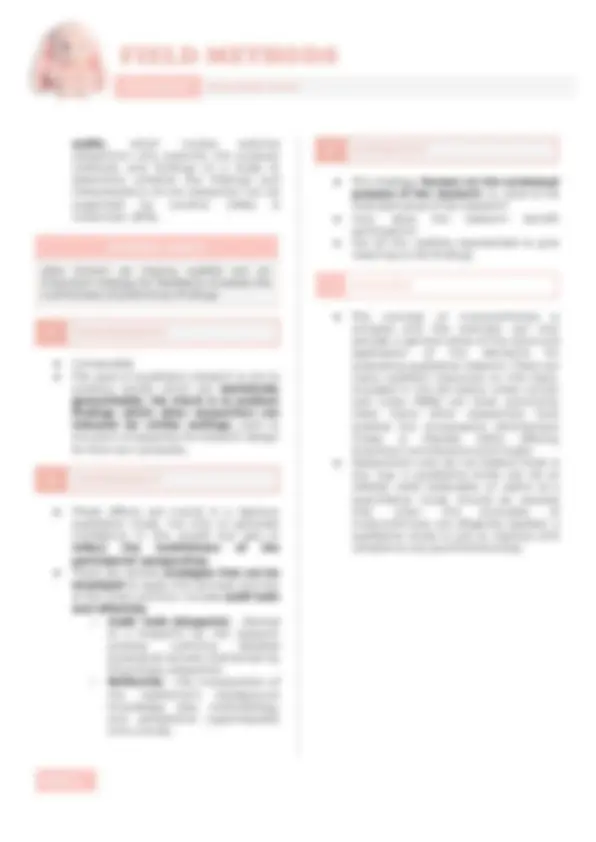



Study with the several resources on Docsity

Earn points by helping other students or get them with a premium plan


Prepare for your exams
Study with the several resources on Docsity

Earn points to download
Earn points by helping other students or get them with a premium plan
Community
Ask the community for help and clear up your study doubts
Discover the best universities in your country according to Docsity users
Free resources
Download our free guides on studying techniques, anxiety management strategies, and thesis advice from Docsity tutors
An insightful summary of how trustworthiness is established in qualitative psychological research. Covers key criteria including credibility, transferability, dependability, and confirmability, along with strategies such as triangulation, member checking, and audit trails. Useful for students learning about research rigor in field methods and qualitative data analysis.
Typology: Lecture notes
1 / 2

This page cannot be seen from the preview
Don't miss anything!


● Researchers expend considerable effort ensuring that their studies are rigorous, valid, reliable, and actionable. ● Typically oriented towards quantitative designs; the guarantee of rigor, validity, reliability, and generalizability are not applied to qualitative designs in the same way. TRUSTWORTHINESS a concept coined by Lincoln and Guba (1985), is considered the quintessential framework for evaluating qualitative research, but receives minimal attention from most researchers, especially if they are predominantly oriented to quantitative methods. ● Five elements: ○ credibility (truth), ○ dependability (consistency), ○ transferability (applicability), ○ confirmability (neutrality), ○ and authenticity. A CREDIBILITY ● Truth ○ Are the results truthful? ○ The quest for credible qualitative results, findings must appear truthful and capture a holistic representation of the phenomenon under exploration. Many ways to apply credibility: ● Prolonged engagement ○ in conjunction with persistent observation (intense focus on the aspects of setting and phenomenon), suggests that the researcher must spend considerable time in the research field to thoroughly understand participant perspectives and to offset the researcher’s own bias. Depending on the nature of the study. ● Peer debriefing ○ feedback from another researcher to compare conclusions; peers may address questions of bias, errors of fact, competing interpretations, convergence between data and phenomena. ● Member-checking ○ selected participants are asked to review the findings or preliminary analysis to assess whether those findings reflect what they expressed to the researcher. ● Triangulation ○ using multiple data sources to produce greater depth and breadth of understanding. Different data collection methods including interviews, journals, focus groups, observations, and documents. ● Negative case analyses ○ which include disconfirming evidence to search for other interpretations in a study ; the use conflicting findings to build a richer picture of the phenomenon likewise allows for continuous refinement of the results (Creswell, 2013). B DEPENDABILITY ● findings stable and consistent over time and across conditions. ● Ensuring that the same research process would generate the same essential findings often depends on external PAGE 1
PSYCHOLOGY DISCUSSION NOTES
audits , which involve external researchers who examine the purpose, methods, and findings of a study to determine whether the findings and interpretations of one researcher can be supported by another (Miles & Huberman, 2014). EXTERNAL AUDITS (also known as inquiry audits) are an important strategy for feedback, to assess the truthfulness of preliminary findings. C TRANSFERABILITY ● Comparable ● The goal of qualitative research is not to produce results which are statistically generalizable, the intent is to produce findings which other researchers can interpret for similar settings, even to the point of applying the research design for their own purposes.. D CONFIRMABILITY ● These efforts are crucial in a rigorous qualitative study, not only to generate confidence in the results but also to reflect the truthfulness of the participants’ perspectives. ● There are several strategies that can be employed to apply this concept, but two of the most common include audit trails and reflexivity. ○ Audit trails (blueprint) - likened to a blueprint for the research process, outlining detailed procedural records maintained by the primary researcher. ○ Reflexivity - the incorporation of the researcher’s background, knowledge, bias, methodology, and perspective superimposed onto a study.
● This strategy focuses on the contextual purpose of the research , i.e. what is the intended value of the research? ● How does the research benefit participants? ● Are all the realities represented to give meaning to the findings ! REMEMBER ● The concept of trustworthiness is complex and this overview can only provide a general sense of the value and application of the elements for evaluating qualitative research. There are many excellent resources on this topic, included in the list below; while Lincoln and Guba (1985) are most commonly cited, many other researchers have entered the conversation (Whittemore Chase, & Mandle, 2001), offering important contributions and insight. ● Researchers who do not believe there is any way a qualitative study can be as reliable, valid, believable, or useful as a quantitative study should be assured that when the principles of trustworthiness are diligently applied, a qualitative study is just as rigorous and valuable as any quantitative study. PAGE 2
PSYCHOLOGY DISCUSSION NOTES